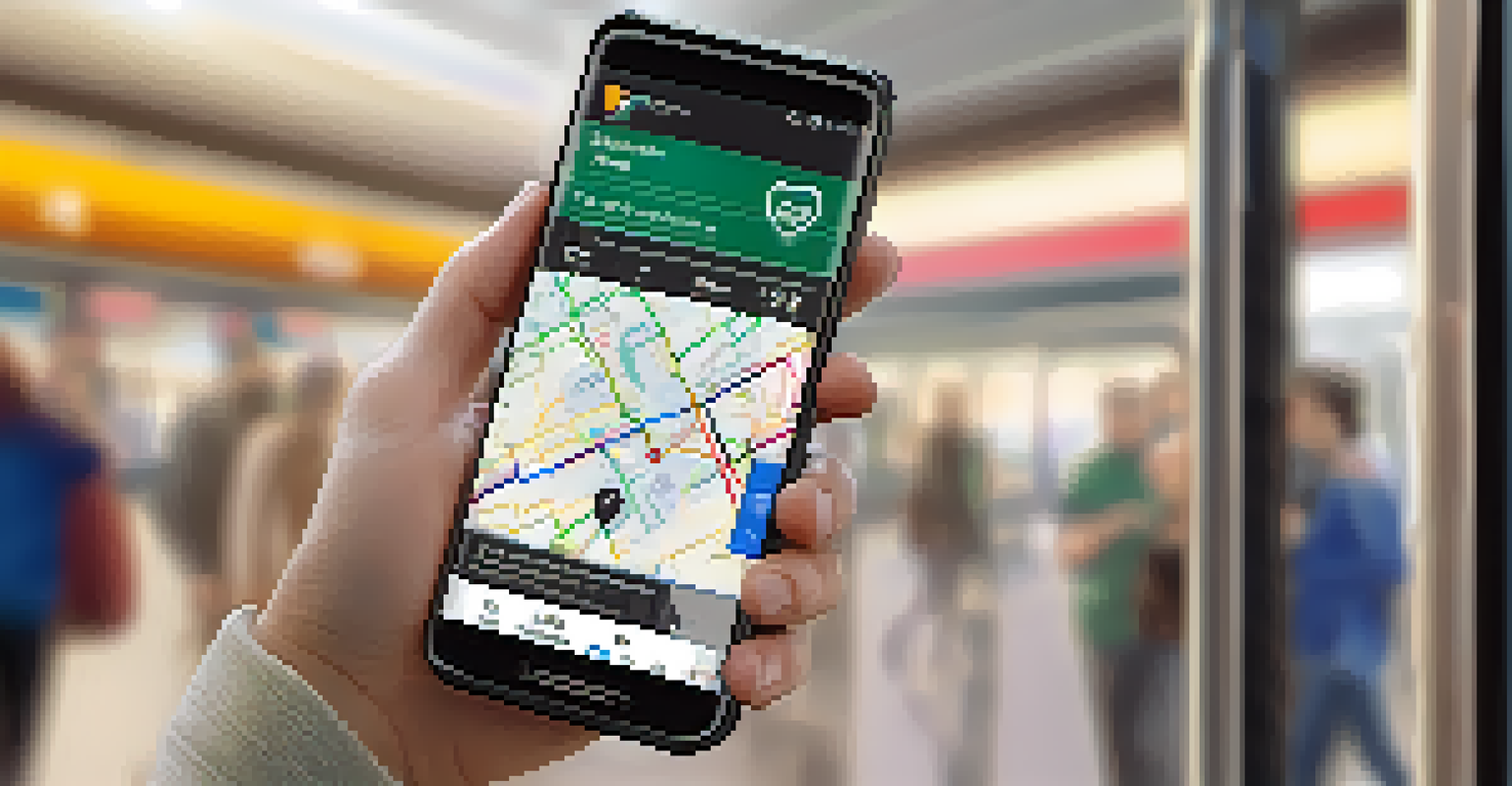Data-Driven Decisions: Improving Transit Services in LA

Understanding the Importance of Data in Transit Services
Data plays a crucial role in shaping effective transit services, especially in a sprawling city like Los Angeles. By analyzing various data points, transit authorities can identify patterns in rider behavior, peak travel times, and service gaps. This understanding allows for targeted improvements, ensuring that resources are allocated where they are needed most.
Without data, you're just another person with an opinion.
For example, if data shows that certain bus routes are consistently overcrowded, transit managers can increase the frequency of those buses. This not only enhances rider satisfaction but also encourages more people to use public transport, potentially reducing traffic congestion. Essentially, data acts as a compass, guiding decision-makers toward more informed choices.
Furthermore, leveraging data can lead to more sustainable practices. By understanding ridership trends, transit agencies can optimize routes and schedules, minimizing unnecessary travel and fuel consumption. In this way, data-driven decisions not only improve service but also contribute to environmental sustainability.
Collecting Relevant Data for Effective Analysis
To make informed decisions, transit agencies must first collect relevant data. This includes ridership numbers, service punctuality, customer feedback, and even social media sentiments regarding transit services. By utilizing various data collection methods, agencies can gain a comprehensive view of how services are performing.

Mobile apps and smart ticketing systems have revolutionized data collection. These tools allow agencies to gather real-time data on passenger flows and travel patterns. For instance, if an app indicates that a specific route is frequently delayed, transit managers can investigate the cause and implement solutions promptly.
Data Drives Transit Service Improvements
Analyzing data helps transit authorities enhance service efficiency by identifying rider patterns and adjusting resources accordingly.
Moreover, collaboration with technology firms can enhance data collection efforts. By leveraging advanced analytics and machine learning, agencies can uncover insights that might not be visible through traditional analysis. This enables a proactive approach to service management, rather than a reactive one.
Using Data to Enhance User Experience
Improving user experience is paramount for any transit system, and data is key to achieving this goal. By analyzing user feedback and travel patterns, agencies can tailor services to meet the needs of commuters. For example, if surveys reveal that riders prefer more direct routes, agencies can adjust their services accordingly.
Data is the new oil. It’s valuable, but if unrefined, it cannot really be used.
Additionally, predictive analytics can help anticipate issues before they occur. If data indicates that a particular line experiences delays during rush hour, agencies can adjust schedules to alleviate congestion. This not only enhances user satisfaction but also fosters a sense of reliability among riders.
Furthermore, providing real-time updates through apps and displays can significantly improve the user experience. Passengers appreciate knowing when their bus or train will arrive, and data-driven solutions can make this information readily available. This transparency encourages more people to choose public transportation.
Implementing Smart Technologies for Better Data Insights
The integration of smart technologies is revolutionizing public transit systems. Sensors, GPS tracking, and IoT devices can collect vast amounts of data, offering insights that were previously hard to obtain. These technologies allow transit agencies to monitor service performance in real-time, making it easier to identify areas for improvement.
For instance, smart traffic signals can prioritize buses during peak hours, reducing travel time and improving service reliability. By analyzing traffic data alongside ridership numbers, agencies can make data-driven decisions that enhance overall service efficiency. This seamless integration of technology and data can lead to a more responsive transit system.
Community Input Shapes Transit Solutions
Engaging with the community through feedback ensures that transit services align with actual rider needs and fosters a collaborative environment.
Moreover, smart technologies can also enhance safety and security. By analyzing data from surveillance systems, agencies can identify patterns of incidents and respond appropriately. This proactive approach not only improves rider safety but also builds trust in the transit system.
The Role of Community Feedback in Data-Driven Decisions
Community feedback is an invaluable component of data-driven decision-making. Engaging with riders through surveys, town hall meetings, and social media can provide insights that raw data alone may overlook. Understanding the community’s perspective ensures that transit services meet actual needs.
For example, if residents express a need for better connections to specific neighborhoods, transit planners can adjust routes accordingly. This kind of responsiveness fosters a sense of ownership among riders, encouraging them to advocate for public transit. The result is a more collaborative approach to improving transit services.
Additionally, incorporating community feedback into data analysis can highlight areas for improvement that may not be immediately evident. By combining quantitative data with qualitative input, agencies can develop a more comprehensive understanding of transit challenges and opportunities.
Evaluating the Impact of Data-Driven Changes
After implementing data-driven changes, it's essential to evaluate their impact. Agencies can analyze ridership data before and after adjustments to determine if the changes led to improvements. This evaluation process is crucial for understanding what works and what doesn’t, allowing for continuous refinement of services.
For instance, if a new route was introduced based on data analysis, tracking its ridership numbers can reveal its success. If ridership increases, it’s a sign that the change was beneficial. Conversely, if numbers remain stagnant, it may prompt further investigation into the reasons behind this lack of engagement.
Future of Transit is Data-Driven
Emerging technologies like AI and MaaS platforms will further enhance data collection and analysis, leading to more personalized and efficient transit experiences.
Moreover, regular evaluations create a culture of accountability within transit agencies. By consistently measuring outcomes, agencies can demonstrate their commitment to improving services and responding to community needs. This transparency fosters trust and encourages ongoing public support.
Future Trends in Data-Driven Transit Services
As technology continues to evolve, so too will the methods for collecting and analyzing data in transit services. Emerging technologies like artificial intelligence and machine learning have the potential to revolutionize how agencies interpret data. These advancements could lead to even more personalized and efficient transit experiences.
For instance, AI could be used to predict ridership trends based on various factors such as weather, local events, and historical patterns. This predictive capability allows agencies to proactively manage resources and improve service reliability. In the fast-paced environment of urban transit, being ahead of the curve is crucial.

Additionally, the integration of mobility-as-a-service (MaaS) platforms is on the rise. These platforms combine various transportation modes into a single accessible service, using data to optimize routes and schedules. This trend not only enhances convenience for riders but also promotes a more holistic approach to urban mobility.